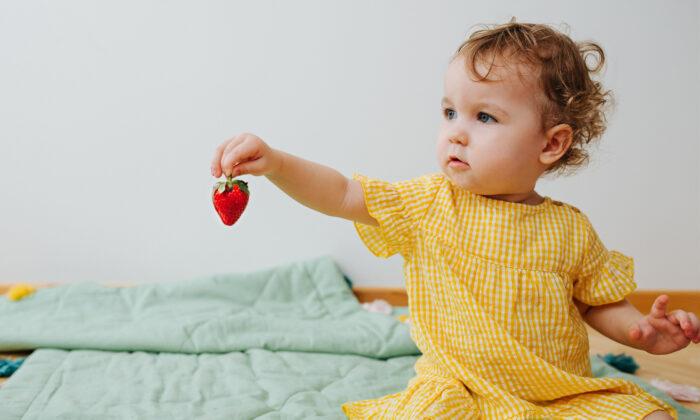Toddlers as young as 2 understand that the noises they make can affect people around them—and know how to adapt the loudness of the sounds they make depending on what they’re doing and where they are.
“This research tells us more about what young children are capable of understanding,” said lead author Rebecca Williamson, assistant psychology professor at Georgia State University. “It means that it’s developmentally appropriate to talk to 2-year-olds about hearing and ask them to be quiet—it’s not out of their grasp to understand this.”
Until now, little has been known about how children develop the ability to understand sounds that others hear.
The study, published in the Journal of Cognition and Development, uncovers a new wrinkle in how different skills unfold throughout childhood by revealing that the social cognition of sound emerges around age 2 or 3.
Bells or Feathers
“Sounds are invisible. Scientists know a lot about visual perspective-taking, and children’s understanding of what we are seeing. But we know very little about how children know what we are hearing,” said co-author Andrew Meltzoff, co-director of the Institute for Learning & Brain Sciences (I-LABS) at University of Washington.
“This study is among the first to test auditory perspective-taking—very young children’s ability to understand how sounds are perceived by others and influence others.”
In the experiment, researchers created two sets of toys that looked very similar—see-through plastic tubes—but contained different objects that made different sounds when the tubes were shaken. Beads or bells in one tube made a loud sound, feathers or glitter in another tube made a soft sound.
One-on-one with an experimenter, the 48 children (aged 2 and 3, and an even mix of boys and girls) had a chance to pick the loud or quiet toy and then play with the toys for up to 10 seconds before giving them back to the researcher. Both types of toys were equally popular among the children during this familiarization phase.
‘Naptime Is Over’
The researcher left the room and came back a few moments later with a baby doll that appeared to be sleeping. Half the children were told, “Look, the baby’s sleeping,” the other half of the children were told, “Naptime is over.” Then they had a second chance to choose between the noisy and quiet toys and to play with both toys.
“We never told the children that they should be quiet or noisy, we just let the toddlers respond,” Williamson said.
Children in the “naptime is over” group more frequently chose the noisy toy and made loud noises with it, whereas children in the “baby’s sleeping” group became quieter in their play. Also, children in the “naptime is over” group who had selected the quiet toy during the familiarization phase knew to switch their toy choice to the loud toy.
“This shows that by age 2 or so, kids have an understanding that the noises they produce have an effect on others,” Williamson said. “What is interesting is that the effect was particularly strong among children who had siblings.”
Learning From Siblings
“What we think is happening is that by age 2, kids have already learned from their own experiences about sound,” she said. “Maybe they’ve been woken up by someone else’s noise, and they use this self-experience to make inferences about how their own behavior will influence others. Or, in the case of kids who have siblings, probably their siblings have taught them a thing or two about loud and soft sounds.”

Besides parents wondering when their child is old enough to understand a plea to “shush,” the research findings could be used by educators to tailor curriculum to different aged-children.
The research could help children with atypical development, too. Because many standard tests that track child development require vision, the hearing-based task developed by the researchers could open the doors to testing the social and cognitive development of children who are blind or children with autism or other disorders.
The research helps to further illuminate how children absorb their social world and make sense of it, Metzloff said.
“Children learn about the social world at an amazingly rapid rate. They pay attention not only to the visible world, but the invisible world. They are thinking about how sounds—which can’t be seen or touched—influence other people.”
[aolvideo src=“http://pshared.5min.com/Scripts/PlayerSeed.js?sid=1759&width=480&height=350&playList=518631385&responsive=false”]
This article was originally published by the University of Washington. Republished via Futurity.org under Creative Commons License 4.0.




Friends Read Free